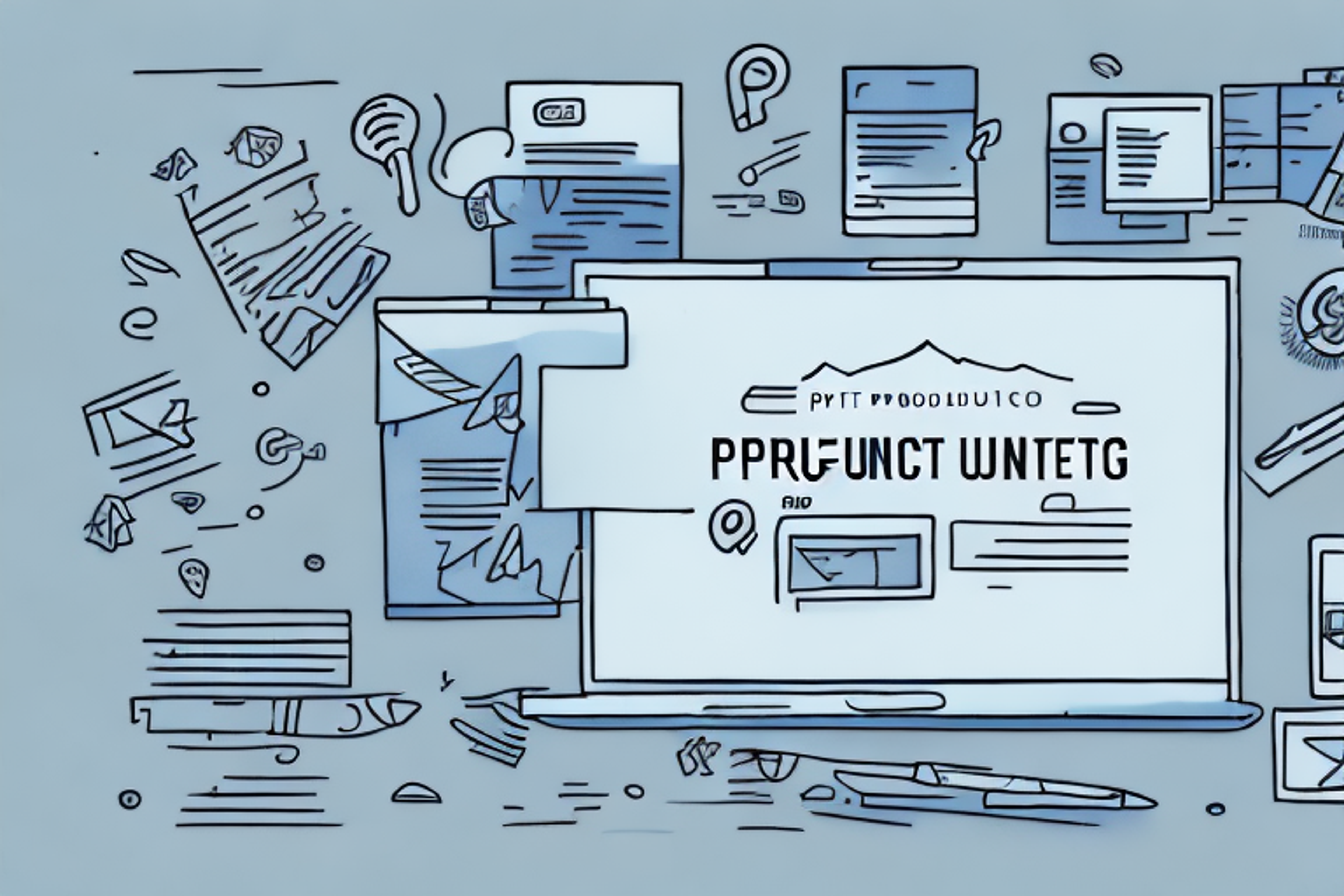Product-Driven Marketing: Strategies for Success
Discover the power of product-driven marketing with our comprehensive guide.
Posted May 15, 2023

Table of Contents
Marketing is all about creating value for your customers. But how do you create that value? For many businesses, the answer lies in a product-driven approach to marketing. In this article, we'll explore why a product-driven approach is important, how to understand your target audience, the role of product development in marketing success, and more.
Why a Product-Driven Approach to Marketing is Important
A product-driven approach to marketing focuses on the product itself as the main driver of marketing efforts. This means that the marketing strategy is built around the value that the product provides to customers. By understanding the unique features and benefits of your product, you can create a marketing plan that highlights these qualities and attracts customers who are looking for these specific benefits.
One of the key benefits of a product-driven approach is that it helps to create a strong brand identity. When your marketing efforts are focused specifically on the product, you can develop a reputation for excellence in that particular area and establish yourself as a leader in your industry.
Another advantage of a product-driven approach is that it allows for more targeted marketing efforts. By understanding the specific needs and desires of your target audience, you can tailor your messaging and promotions to appeal directly to them. This can lead to higher conversion rates and a more loyal customer base.
Understanding Your Target Audience
Before you can create a successful product-driven marketing strategy, you need to understand your target audience. Who are your customers? What are their needs? What do they value most in a product?
One way to gain insight into your target audience is by conducting market research. This can include surveys, focus groups, or even social media listening to understand what your customers are saying about your product or your industry. This information can be invaluable in shaping your product development and marketing efforts.
Another way to understand your target audience is by analyzing your website and social media analytics. By tracking user behavior, you can gain insights into what content is resonating with your audience, what pages they are spending the most time on, and what actions they are taking on your website. This information can help you optimize your website and social media content to better meet the needs and preferences of your target audience.
The Role of Product Development in Marketing Success
Product development plays a crucial role in the success of a product-driven marketing strategy. By understanding your target audience and their needs, you can create a product that meets those needs and provides unique benefits that will set it apart from the competition.
In order to create a successful product, it's important to involve your marketing team in the product development process from the beginning. This can help to ensure that the product meets the needs of your target audience and will be well received by the market.
Additionally, product development can also help to identify new market opportunities and potential areas for growth. By analyzing market trends and consumer behavior, product development teams can create products that fill gaps in the market and meet emerging needs.
Creating a Unique Selling Proposition (USP)
A unique selling proposition (USP) is a statement that highlights the unique features and benefits of your product and differentiates it from the competition. Your USP should be clear, concise, and memorable.
In order to create an effective USP, you need to understand your target audience and what they value most in a product. What is the one thing that your product does better than any other product on the market? That should be the focus of your USP.
Another important aspect of creating a USP is to make sure it is relevant to your target audience. Your USP should address a specific pain point or need that your target audience has, and offer a solution that is unique to your product.
It's also important to keep your USP updated and relevant as your product and market evolve. Your USP should reflect any changes or improvements to your product, and continue to differentiate it from the competition.
Identifying Key Features and Benefits of Your Product
In order to create an effective product-driven marketing strategy, you need to identify the key features and benefits of your product. What makes it unique? What problems does it solve for your customers? How does it make their lives better?
Once you have identified the key features and benefits of your product, you can use them to create messaging that resonates with your target audience and highlights the value that your product provides.
It's important to note that the key features and benefits of your product may evolve over time. As your product develops and your customers' needs change, you may need to re-evaluate and adjust your messaging accordingly. Regularly reviewing and updating your product's key features and benefits can help ensure that your marketing strategy remains effective and relevant.
Developing a Comprehensive Marketing Plan
With a clear understanding of your target audience and the unique features and benefits of your product, it's time to create a comprehensive marketing plan. Your marketing plan should include a mix of tactics that will help you reach your target audience and promote your product.
Some key tactics that you may want to include in your marketing plan include content marketing, social media marketing, email marketing, paid advertising, and public relations. Your marketing plan should be tailored to your specific business and target audience.
Leveraging Social Media for Product-Driven Marketing
Social media can be a powerful tool for product-driven marketing. By creating engaging content that highlights the unique features and benefits of your product, you can attract followers who are interested in your particular niche or industry.
One of the keys to successful social media marketing is to be consistent. You should post regularly and engage with your followers to build a sense of community around your product and brand.
Building a Strong Brand Identity Through Product-Driven Marketing
Product-driven marketing can be a powerful tool for building a strong brand identity. By focusing on the unique features and benefits of your product, you can create a reputation for excellence in your industry and establish yourself as a leader.
In order to build a strong brand identity, it's important to be consistent in your messaging and branding. Your messaging should always highlight the unique features and benefits of your product and set you apart from the competition.
Measuring the Success of Your Product-Driven Marketing Campaign
Measuring the success of your product-driven marketing campaign is crucial to understanding what is working and what isn't. You should establish key performance indicators (KPIs) at the beginning of your campaign and track them regularly.
Some common KPIs for a product-driven marketing campaign include website traffic, social media engagement, email open rates, and sales conversions. By tracking these metrics, you can adjust your strategy as needed to improve results.
The Importance of Customer Feedback and Reviews
Customer feedback and reviews can be invaluable in shaping your product development and marketing efforts. By listening to what your customers are saying about your product, you can identify areas for improvement and make changes that will make your product more appealing to your target audience.
Encouraging customer feedback and reviews can also help to build trust and credibility with your target audience. When potential customers see positive reviews from other customers, they are more likely to trust your product and make a purchase.
Adapting and Updating Your Product-Driven Marketing Strategy Over Time
Product-driven marketing is not a one-time effort. In order to be successful, you need to adapt and update your strategy over time based on changing market conditions and customer feedback.
Regularly reviewing your marketing plan and making changes as needed can help you stay ahead of the competition and continue to provide value to your customers.
Case Studies: Successful Examples of Product-Driven Marketing in Action
Looking at successful examples of product-driven marketing can provide inspiration and ideas for your own marketing efforts. Some successful examples include Apple's focus on the user experience, Nike's emphasis on performance and innovation, and Airbnb's unique value proposition for travelers.
By studying these examples and others, you can gain insight into what works and what doesn't in product-driven marketing.
Common Mistakes to Avoid in Product-Driven Marketing
There are several common mistakes that businesses make in product-driven marketing. These include focusing too much on the product and not enough on the customer, failing to understand the target audience, and neglecting to measure the success of your marketing efforts.
By avoiding these common mistakes and staying focused on your target audience and unique features and benefits of your product, you can create a successful product-driven marketing strategy.
Conclusion: How to Implement a Successful Product-Driven Marketing Strategy for Your Business
Implementing a successful product-driven marketing strategy takes time and effort, but it can pay off in the form of increased sales and a stronger brand identity. To implement a successful strategy for your business, you should:
- Understand your target audience and what they value in a product
- Create a unique selling proposition (USP) that highlights the unique features and benefits of your product
- Develop a comprehensive marketing plan tailored to your target audience
- Leverage social media to build a community around your product and brand
- Measure the success of your marketing efforts and adapt your strategy as needed
By following these steps and staying focused on your product and target audience, you can create a successful product-driven marketing strategy that will help your business stand out in a crowded marketplace.



















